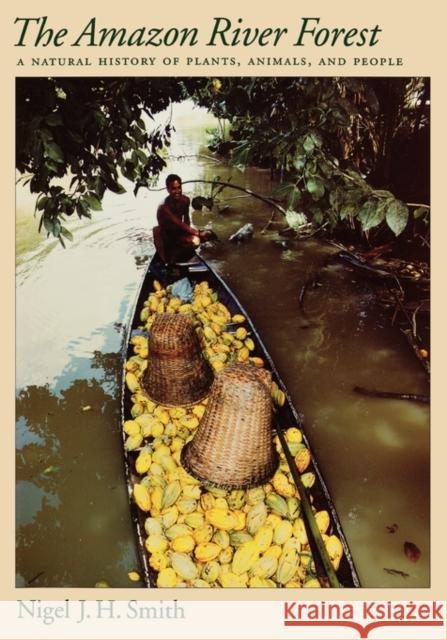The Amazon River Forest: A Natural History of Plants, Animals, and People » książka
topmenu
The Amazon River Forest: A Natural History of Plants, Animals, and People
ISBN-13: 9780195126839 / Angielski / Miękka / 1999 / 24 str.
The Amazon River Forest: A Natural History of Plants, Animals, and People
ISBN-13: 9780195126839 / Angielski / Miękka / 1999 / 24 str.
cena 216,51
(netto: 206,20 VAT: 5%)
Najniższa cena z 30 dni: 208,20
(netto: 206,20 VAT: 5%)
Najniższa cena z 30 dni: 208,20
Termin realizacji zamówienia:
ok. 30 dni roboczych.
ok. 30 dni roboczych.
Darmowa dostawa!
The floodplain forest of the worlds mightiest river, the Amazon, is one of the last major agricultural frontiers. Inhabitants of this bountiful environment have long harvested its wealth of plant and animal resources for a wide array of products, especially fruits, nuts, building materials, fuelwood, and medicinal plants. While the Amazon floodplain has great potential for food production, this unique habitat, inundated every year to a depth of up to 30 feet, is increasingly threatened by ranching and agricultural expansion, and its natural resource base is being impaired by inappropriate land-use practices.
In this book, geographer Nigel Smith reviews the natural history of the area from the people's perspective, offering a large-scale portrayal of the culture of the region not found in most books on Amazonia. The book investigates how the ways in which people make a living are entwined with religious and spiritual beliefs, as well as with nature. Smith challenges the notion that the Amazon basin is a demographic void and a cultural backwater, arguing that the region, densely settled in the past, could again become a prosperous agricultural area. He points out that the local inhabitants' knowledge of the basins natural history is a vital--and sorely overlooked--resource for sound economic development. Topics explored include ecological, cultural, and socioeconomic issues surrounding animal husbandry, domestication of game, annual cropping, agroforestry, and the gathering of forest products. Examining the historical dimensions of various land uses, Smith suggests practical ways to develop the floodplain that enhance, rather than destroy, biodiversity. A pathbreaking study, impeccably researched and beautifully illustrated, this book will interest a broad audience of individuals and organizations concerned with the development and conservation of rainforests and wetlands.










